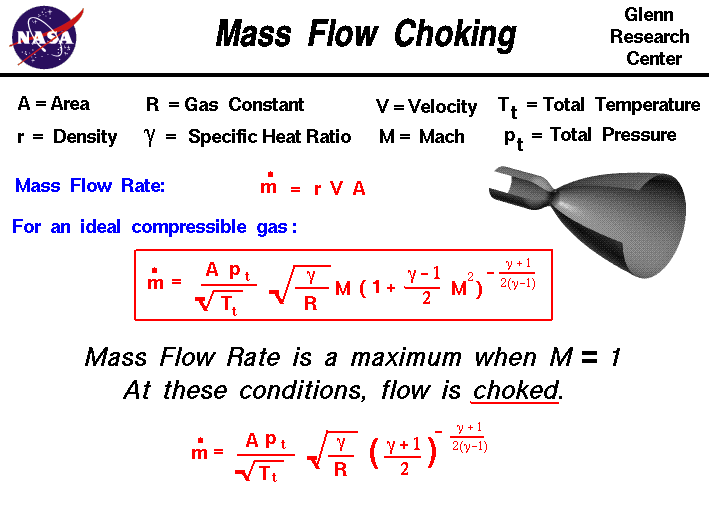Does orifice diameter affect critical pressure through a converging nozzle, or is it entirely dependent on the ratio of inlet and outlet pressure? (assume Isentropic flow of air). References from other forum posts listed at the bottom.
I've seen many references for testing for choked flow using the following equation that depends only on pressure, not orifice diameter. Assuming dry air (k = 1.4), this works out to P/Po < .5283 for sonic flow (M=1) to occur.

Does orifice diameter have any effect on this? For example, if I enlarged the orifice to 99% on the inlet pipe diameter, wouldn't sonic flow cease to occur?
The formula for mass flow seems to reinforce that orifice area only scales the mass flow, with no effect on when max flow peaks (i.e. at sonic speeds, M = 1).

Am I thinking of this correctly? What gives?
Posts from other forums regarding choked flow:
[faq798-1196]
[faq1203-1293]
Other guides on sonic flow I have studied but had a hard time digesting.
[]
[]
Thanks in advance for straightening me out!
I've seen many references for testing for choked flow using the following equation that depends only on pressure, not orifice diameter. Assuming dry air (k = 1.4), this works out to P/Po < .5283 for sonic flow (M=1) to occur.

Does orifice diameter have any effect on this? For example, if I enlarged the orifice to 99% on the inlet pipe diameter, wouldn't sonic flow cease to occur?
The formula for mass flow seems to reinforce that orifice area only scales the mass flow, with no effect on when max flow peaks (i.e. at sonic speeds, M = 1).

Am I thinking of this correctly? What gives?
Posts from other forums regarding choked flow:
[faq798-1196]
[faq1203-1293]
Other guides on sonic flow I have studied but had a hard time digesting.
[]
[]
Thanks in advance for straightening me out!
